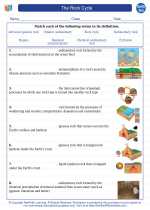What is an Animal?
Animals are multicellular, eukaryotic organisms that belong to the kingdom Animalia. They are heterotrophic, meaning they obtain their energy by consuming other organisms. Animals are a diverse group, with over 1 million known species, ranging from microscopic invertebrates to large mammals.
Characteristics of Animals
1. Multicellular: Animals are composed of multiple cells, organized into tissues and organs.
2. Eukaryotic: Animal cells have a true nucleus and membrane-bound organelles.
3. Heterotrophic: Animals cannot produce their own food and rely on consuming other organisms for nutrients.
4. Movement: Most animals are capable of some form of movement, whether it's walking, swimming, or flying.
5. Sexual Reproduction: Animals typically reproduce sexually, although some may also reproduce asexually.
6. Sensory Organs: Animals have well-developed sensory organs, such as eyes, ears, and olfactory receptors, that allow them to interact with their environment.
Classification of Animals
Animals are classified into various phyla based on their physical and genetic characteristics. Some of the major phyla include:
- Porifera (sponges)
- Cnidaria (jellyfish, corals)
- Platyhelminthes (flatworms)
- Chordata (vertebrates and non-vertebrates)
- Arthropoda (insects, arachnids, crustaceans)
- Mollusca (snails, clams, squids)
- Echinodermata (starfish, sea urchins)
Study Guide
1. What are the defining characteristics of animals?
2. Describe the process of sexual reproduction in animals.
3. Compare and contrast the major phyla of animals, focusing on their distinguishing features and examples of species within each phylum.
4. How do animals obtain and process nutrients for energy?
5. Research and present a case study on an endangered animal species and its conservation efforts.
.◂Earth Science Worksheets and Study Guides High School. The Rock Cycle
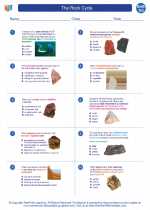
 Worksheet/Answer key
Worksheet/Answer key
 Worksheet/Answer key
Worksheet/Answer key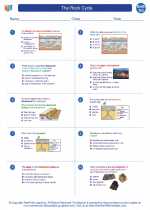
 Worksheet/Answer key
Worksheet/Answer key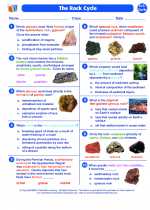
 Vocabulary/Answer key
Vocabulary/Answer key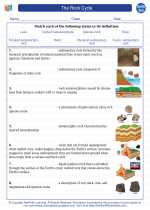
 Vocabulary/Answer key
Vocabulary/Answer key
 Vocabulary/Answer key
Vocabulary/Answer key